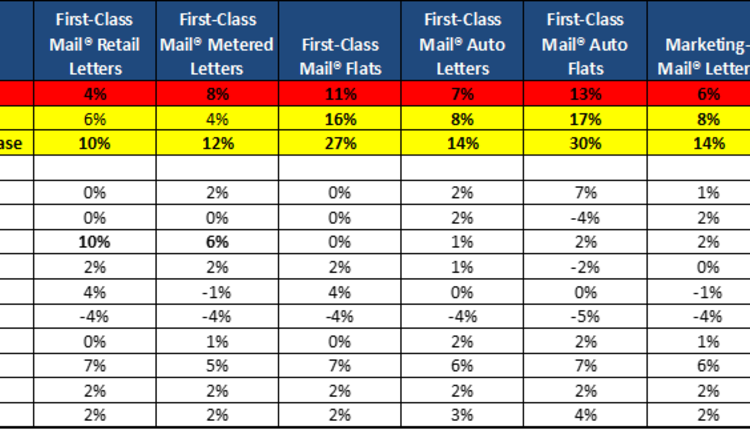Certified Mail from the USPS is used when you need to prove that something was mailed and then received by the end user. It is for items like insurance policy cancellations or important medical claims, where the sender wants to protect themselves legally by proving they did everything possible to inform the individual about their issue.
There are two ways to process Certified Mail:
1. Certified Mail with a hard copy PS form 3811 “Green Card” Return Receipt: $7.90 + Regular Postage
2. Certified Mail with an Electronic Return Receipt: $6.55 + Regular Postage
The issues with the Green Card method are the following:
1. It is labor-intensive to fill out the green cards.
2. You must manually validate that you got all the signed green cards back and then file them with your records.
3. They cost $1.35 more per piece than the electronic method.
The focus of the rest of this article is regarding streamlining the electronic process and to show you what is available to further automate this process. The electronic version means you are submitting the transaction electronically to the USPS (instead of filling out the green card), and tracking your item online to then pull a single page PDF of the signature as your proof of mailing and delivery.
Postage Meter: One of the first methods used by organizations to qualify for the electronic method is by submitting them through a special subscription in your postage meter. You would type or scan the certified number into your meter along with the ZIP Code and transmit to the USPS. This method has some flaws because you do not have a full record of who it is sent to because very little information is being submitted in the file. It is much more difficult to maintain records (which are usually done manually) to match the full address of the item to the certified mail number. If you are using this process, you will be pleased to see higher levels of automation available that match the address and certified information in one defined process.
Integrated Certified Mail Solutions: This is a wide category based on the feature sets that could be imbedded. It could be a fully online solution or part of an installed shipping, mailing, and accounting solution. The most important factor is that all systems in this category can do full electronic submission to the USPS (being able to type or import an address into a system to process a single or batch of Certified Mail items directly to the USPS).
Generating the Certified Mail – Forms Submission
· Custom Forms – Some vendors require that you print on their expensive forms that would include the Green Certified barcode. Even some electronic submissions will still use custom forms.
· USPS Certified Barcodes Only – Some platforms will let you scan these barcodes into your system and apply them directly onto your piece. This is a great low-cost option, but still requires the user to match the address to the barcode through the submission. These labels can also be printed with a connected thermal label printer.
· Cover Sheet – The fastest growing trend is to print cover sheets into an oversized window envelope with a green border on top. This will have the address, barcode, and sometimes postage printed directly onto the letter that shows through the window.
· Directly Onto Your Letter – Fully automated systems can communicate to a document creation tool to have the barcodes printed directly onto your main document. They use similar envelopes to the Cover Sheet model above.
Submitting at the USPS – All of the methods will submit an electronic file directly to the USPS. The question is if you need more proof that the item was dropped off at the Post Office. These are your options:
· Single Piece Rubber Stamp – The item is brought to the USPS and rubber stamped by the clerk with that day’s date. This is typically done for items with the Green Card return receipt.
· Scan Form – This is a form that can be brought to the USPS and they can scan the form and rubber stamp that the items were sent.
· Firm Mail Book – This is a manifest of all items that are being dropped off and is considered the highest level of proof of mailing.
Proving items were delivered – There are many ways this can be done based on your level of automation. The biggest difference is the amount of effort to get the certified proof back to your own records system. The nice thing about the electronic methods is they can show you in some list format which items have been delivered and which are still pending. Items that are pending after long periods of time may need to be resent or contacted by a different means to ensure the recipient is receiving the required information.
· One at a time – Most basic systems will provide a listing of all your items that were delivered but you need to click on each one manually to generate your PDF Return Receipt. This can be labor- intensive when doing larger quantities.
· Weekly in batch – The USPS has a file that can be sent weekly to some higher end platforms that receives all the certified items in one consolidated PDF. Platforms that accept this format will be able to pull the signatures from this document right into the client record.
· Weekly in batch with splitter tools – This is the same as the item above, but it can take the large PDF file from the USPS and split it into individual PDF documents. Each file is typically named as the reference number that was submitted with the record to make retrieval easy. These files can be stored in a specific directory to be automatically attached to the client record through an image and workflow system. This makes it an automatic process to have the proof of receipt included directly in the client’s, file making future research easy.
Items to consider when deciding on the system that is right for you.
· How critical are these documents and what risks are there when proof is needed?
· Is everything coming out of one location and department, or do you need this capability available throughout your enterprise?
· Do you need these generated in-house or could files be sent to a separate production facility or to third parties to process?
· How many of these documents are generated at once and should the certified process be built into the document creation process?
· Are there other services that could be done on the same mail automation platforms such as:
o USPS stamp creation to provide mail access to all locations.
o Automate other USPS mail classes like Priority Mail and Ground Advantage
o USPS, UPS, and FedEx rate shopping processed in a single solution
o Single Sign On for optimized user management
While this is far from the most exciting topic, if you must generate Certified Mail, you know the pains that are involved, and having the right level of automation can make a big difference. It can simplify how the documents are created, submitted, deposited, and tracked. The best part is with the savings now being $1.35 per electronic return receipt, it can pay to automate your processes.
Adam Lewenberg, CMDSS, MDC, President/CEO of Postal Advocate Inc., runs the largest Mail Audit and Recovery firm in the United States and Canada. They manage the biggest shipping & mail equipment fleet in the world and their mission is to help organizations with multi-locations reduce mail and parcel related expenses, recover lost postage funds, and simplify visibility and oversight. Since 2011, they have helped their clients save an average of 55% and over $85 million on equipment, presort, avoidable fees, and lost postage. He can be reached at 617.372.6853 or adam.lewenberg@postaladvocate.com.
This article originally appeared in the September/October, 2023 issue of Mailing Systems Technology.






![GettyImages-1170541989-[Converted]](https://cms-static.wehaacdn.com/mailingsystemstechnology-com/images/GettyImages-1170541989--Converted-.1803.widea.0.jpg)



